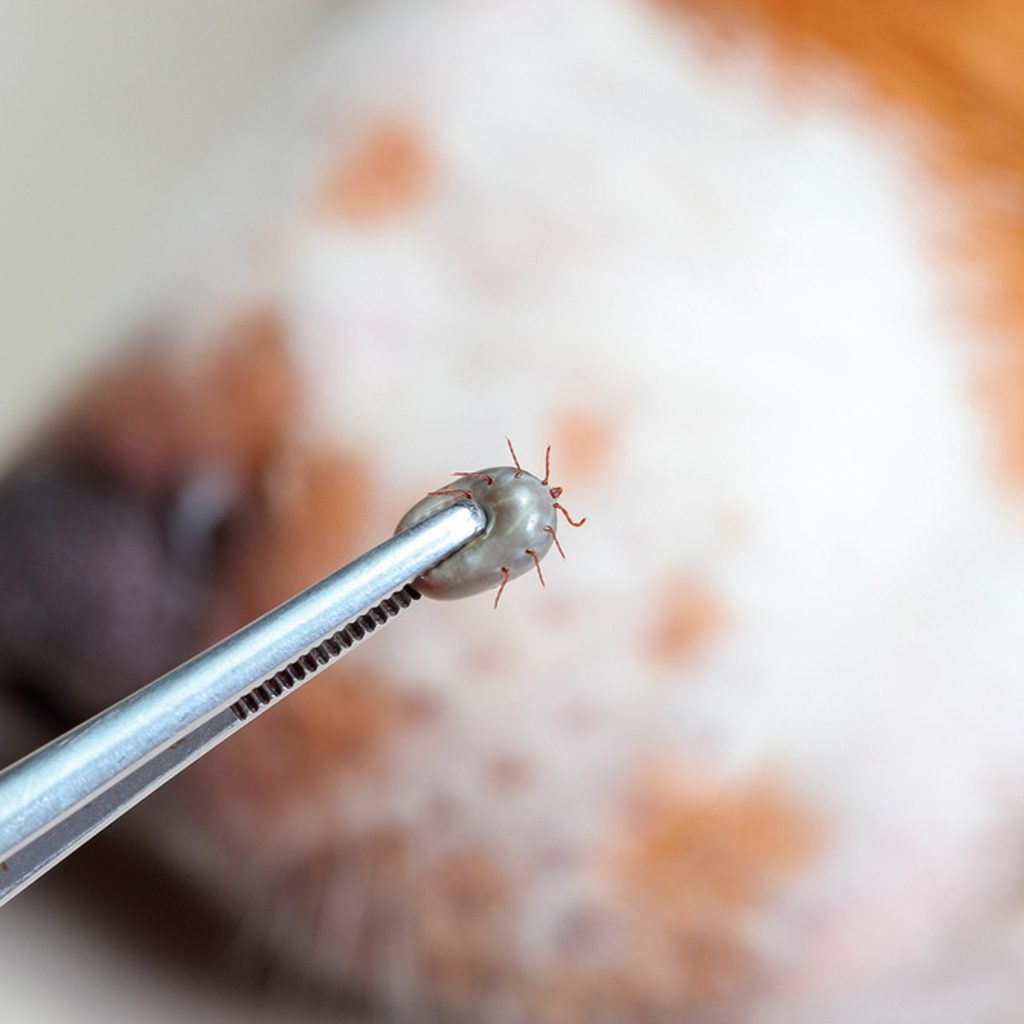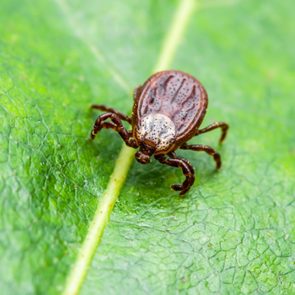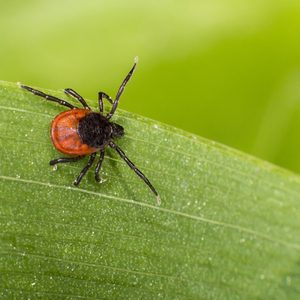What to Do When You Find a Tick in Your House

...And tips on how to prevent it from happening in the first place.
An innocent walk through the woods with your pup can result in ticks entering your home. While many varieties of ticks aren’t prone to making a home indoors. Deer ticks, for example, typically die within 24 hours, and can only survive short periods in places where moisture content is less than around 90 per cent. Brown dog ticks, however, can make their nests and thrive indoors. So, if you find a tick in your house, be sure to keep these things in mind. (Take a look at the most disgusting bugs in your home—and how to get rid of them.)
Check yourself and your family
A long walk in the woods with Fido and the family on a beautiful day can result in ticks hitchhiking their way into your home via your clothing and the dog’s fur. Be sure everyone wears clothing that covers their skin. Also, be sure to carefully check your hair and your pet’s fur. Comb through your dog’s fur, and check for any bumps. Also, check your pet’s feet (including between the toes), inside their ears, and around the face and neck, according to the American Kennel Club. Have an outdoor cat? You’ll want to check them every time they come in. (Here are some common myths about ticks.)
Use tick treatments
For an extra dose of safety, be sure to prevent ticks from clinging to your animals in the first place by using tick prevention. Your vet can recommend systemic treatment in the form of monthly chewable tablets, or tick collars, sprays, and spot-on treatments
Modify your landscape
To keep ticks out of your home, keep them out of your yard. Consumer Reports suggests keeping your lawn mowed to a height of eight centimetres [three inches], getting rid of brush, weeds, and other debris, raking up leaf litter and cutting down underbrush for several feet into any woods that border your yard. You may also want to use wood chips or gravel to create a barrier between wooded areas where ticks are common and your lawn and moving woodpiles, bird feeders, and birdbaths far from your home to keep mice and chipmunks, which are hosts for ticks, away.
Repair and seal any crevices or gaps
Most ticks have no interest in coming indoors. However, brown dog ticks can be enticed indoors through small cracks and crevices that you can’t even see. If this happens and ticks start laying eggs, you could have a full-blown infestation on your hands. So, this is one more reason to be diligent with your efforts to seal up cracks and openings in your home’s exterior.
Vacuum like you mean it!
Suck up any ticks in your home with a vacuum, suggests the Environmental Protection Agency (EPA). The device will not only pick up the ones you see but will gather ticks in all life stages. Use it especially in places frequented by your outdoor animals, as well as your carpets, rugs, and furniture.
Scatter diatomaceous earth
You can scatter powders called desiccants in your home. Pests brush up against them and the powders destroy the insects’ waxy outer layers. The two most common desiccants are diatomaceous earth and boric acid. Boric acid can be toxic if ingested, so diatomaceous earth is a safer alternative. Rake diatomaceous earth into the carpet, and into the corners of any uncarpeted floors. Remove after a week. It’s made up of tiny fossilized aquatic organisms that pierce the tick’s outer layer as it crawls over the fine powder, dehydrating the tick without using toxic pesticides.
Dry clothes, then wash them
When coming indoors after spending time outside, immediately take off your clothes and throw them in the dryer. This will kill any ticks that are on the clothes. Leave the clothes in the dryer on high for 15 minutes, and then wash them.
Next, find out the best way to remove a tick.






